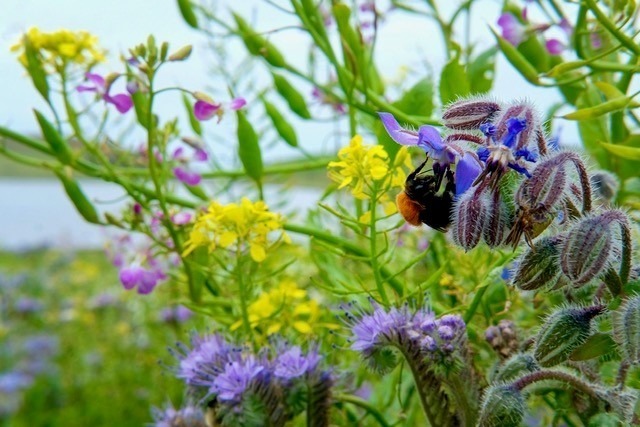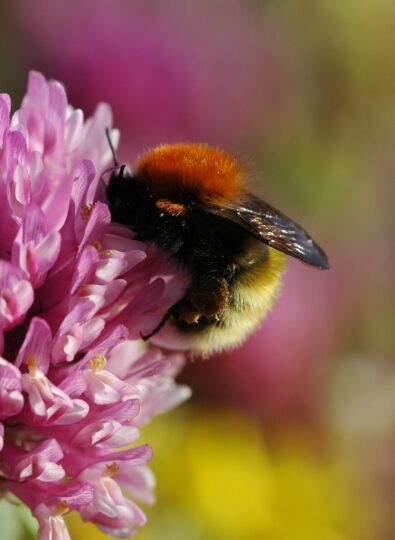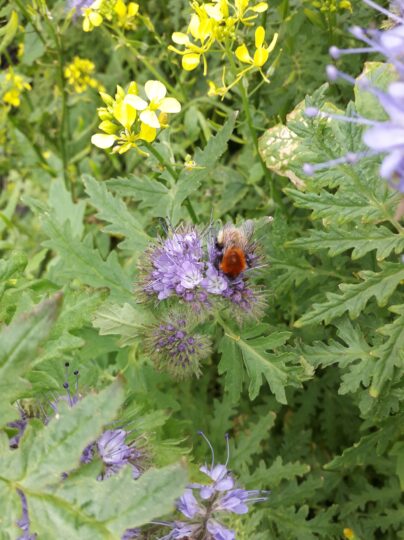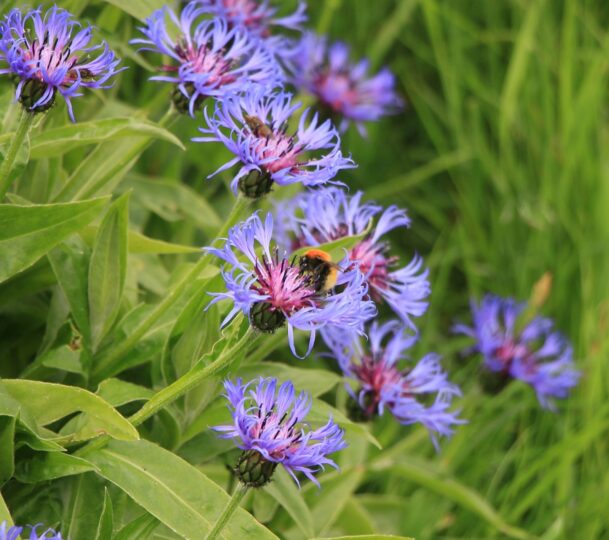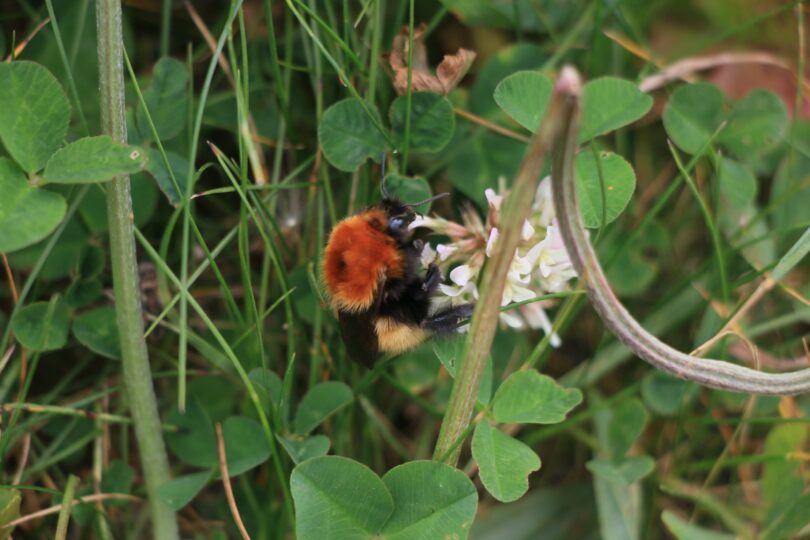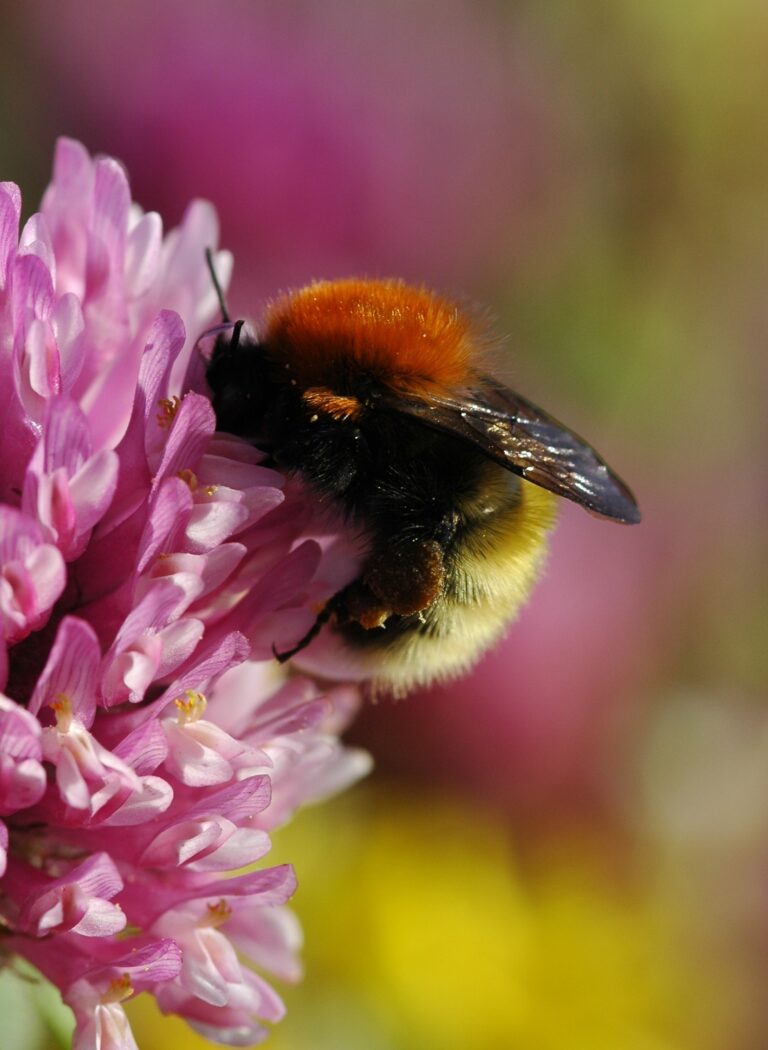
Key facts
- Gaelic name: Seillean càrdair na còinnich
- Local name: Shetland bumblebee
- Distribution: Endemic to Shetland and the Western Isles
- When to see: May – October
- Species on the Edge areas: Shetland
Species information
How to identify
This moss carder bee subspecies (Bombus muscorum agricolae) is a distinct island race that is endemic to Shetland and the Western Isles. It is unmistakable with its Lucozade-orange thorax and sunshine yellow bottom. It is its incandescent colouration (as well as its genetics) that separates it out from the moss carder bee of mainland Scotland and inner islands.
When to see
The flying season for the moss carder bee subspecies is May – October.
Distribution
Habitat and feeding
Conservation status
The moss carder bee is currently listed as vulnerable in Europe by the IUCN European Red List of Bees. There is currently insufficient date to establish the status of the distinct island race of moss carder bee found in Shetland and the Western Isles.
Threats
What Species on the Edge is doing
-
Monitoring and surveying
- Leading BeeWalks
- Training volunteers to lead BeeWalks
-
Engaging with local communities to increase awareness of bumblebees
- Engaging with farmers, crofters and land managers to advise on best management and engage in targeted work to benefit the species
Our work for bumblebees
Resources
Watch
Species on the Edge Bee ID Training
If you are interested in learning more about our work with bumblebees and how you can get involved, get in touch with your local Species on the Edge team.
